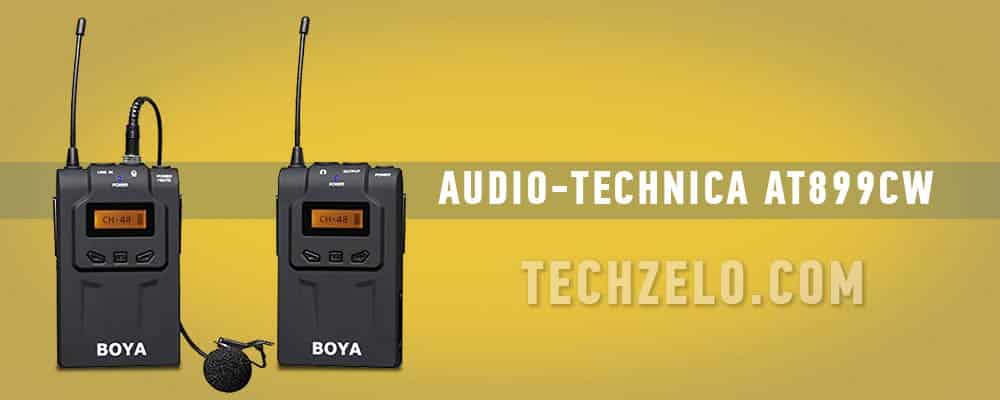Lavalier microphone is a very useful and effective thing for situations where there is a need to shoot a video with a talking person in the frame. The reporter lifts a large microphone adorned with the channel logo, utilizing cannon microphones in situations where recording an interview in detail is impossible.
In most situations, a lavalier microphone is very helpful. It allows you to use your hands freely, and when you wear it on your clothes, it’s hard to see. However, many lavalier microphones need to be connected with a wire, which can be a problem because the wire is usually not very long. This limits how far you can move around and what you can do. One solution is to use a wired lavalier microphone with a separate recording device, but this can be tricky to manage during editing. So, the best option is to use a wireless system. Many bloggers and film crews use or want to use this kind of system. The BOYA BY-WM4 is one of the cheapest options available right now, and it still works pretty well.
General view
BOYA BY-WM6
This system works just like others of its kind: The sound from the small microphone is sent through a short wire to a device you wear on your belt or put in your pocket. This device boosts the sound and sends it wirelessly to a receiver attached to the camera or recorder. The BOYA BY-WM4 package comes with everything you need for it to work well, including a case, a small microphone you can clip to your clothes, a transmitter, a receiver, and two short wires to connect the receiver to a camera or smartphone.
One wire has two small jacks, and the other has a special jack for smartphones. There’s also a piece included to attach the receiver to a camera. The clip you use to attach the device to your belt is removable, and it can rotate to fit the device in different positions, which is really handy.
Technical points

The sender and receiver are both simple and small. They look like black rectangles and are tough. They have switches to turn them on and adjust the volume. The sender’s switch controls the microphone volume, while the receiver’s switch controls the volume of the headphones. Each device has two 3.5 mm jacks. The sender has one for a microphone and another for connecting other audio devices. The receiver has one for sending signals to the camera and another for headphones. Both devices run on one AA battery, which lasts for about three hours of continuous use.
One downside of the system is that it doesn’t work from far away. It can only reach up to about 25 meters when there’s nothing blocking it. Fancy devices can work from up to 90-100 meters away even with obstacles. But considering the low price and the fact that it doesn’t need wires, even this limited range can still be seen as useful.
The message is sent at 2.4 billion cycles per second using a method called Gaussian frequency shift modulation. Despite some limitations, the signal quality is decent enough, with a signal-to-noise ratio of 76 decibels. The frequency range covers sounds from 35 to 14,000 cycles per second, which is good for most tasks. Even though there might be better options out there, this one is still pretty good for its type.
In the first minutes after turning on the devices, periodic signal breaks occur with a break of 10-15 seconds. This is due to the long switching of the receiver and transmitter. That is, it is better to turn on the device in advance and prepare it for work.
Overall, the transmission was mostly stable, but there’s a delay issue with the signal. This means that when someone speaks into the microphone, I hear their voice slightly later in the headphones. This problem makes the device less useful. For example, the BOYA BY-WM4 won’t work well for live broadcasts unless you can adjust the video to match the delay. In other situations, like during setup, we’ll need to make some adjustments, but it’s not too hard to do.
There is also difficulty in working near sources of third-party sounds when the microphone captures everything around the sound. However, this is quite typical for more expensive models, and the filter from the kit allows you to partially compensate for the problem.
Conclusion
To buy or not? Everything is very simple. The cons of this system are noticeable, but they are fully offset by a very attractive price. You can come to terms with all the inconveniences if the user needs an extremely cheap version of a wireless system with acceptable quality. BOYA BY-WM4 perfectly withstand active daily operation. Putting aside direct broadcasts, this is the best option for bloggers and all fans in general.
Characteristics and features
- Set of receiver, transmitter and lavalier microphone with accessories
- Affordable price
- 25 meters working range
- 48 working channels
- Receiver and transmitter powered by AA batteries up to 3 hours of continuous operation
- 35-14000 Hz frequency range
Conclusion
If you’re a budget-conscious content creator, the BOYA BY-WM4 offers decent quality despite minor cons. Perfect for daily use, it’s a reliable companion for vloggers and filmmakers alike. While it may not excel in live broadcasts, its affordability and functionality make it a top pick for those looking to upgrade their setup without breaking the bank. With its convenient wireless design and included accessories, this microphone system offers great value for its price.
